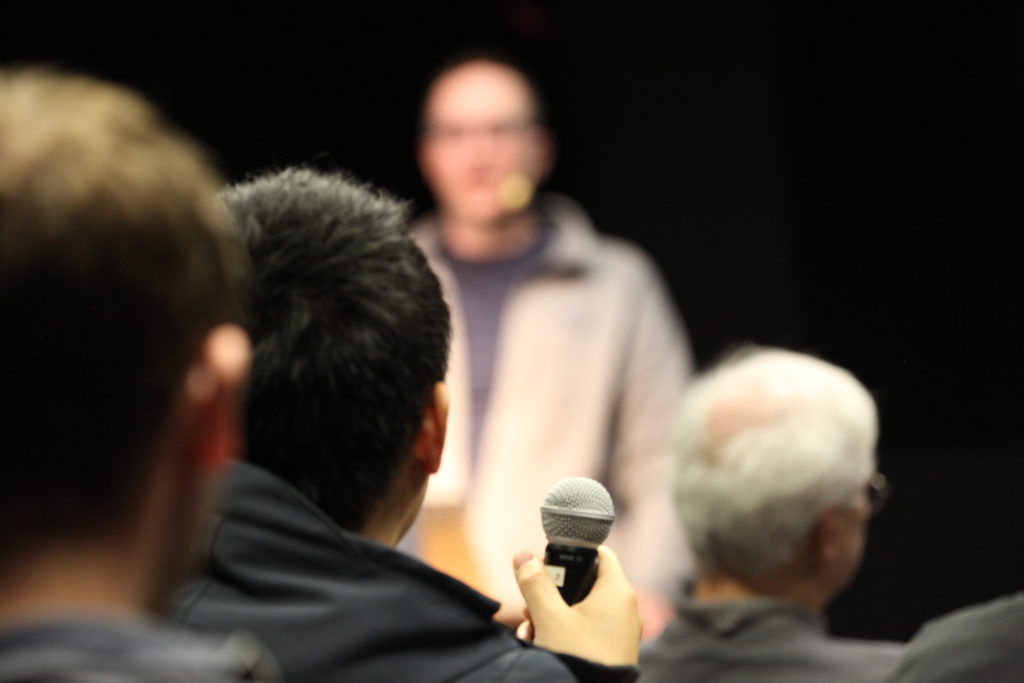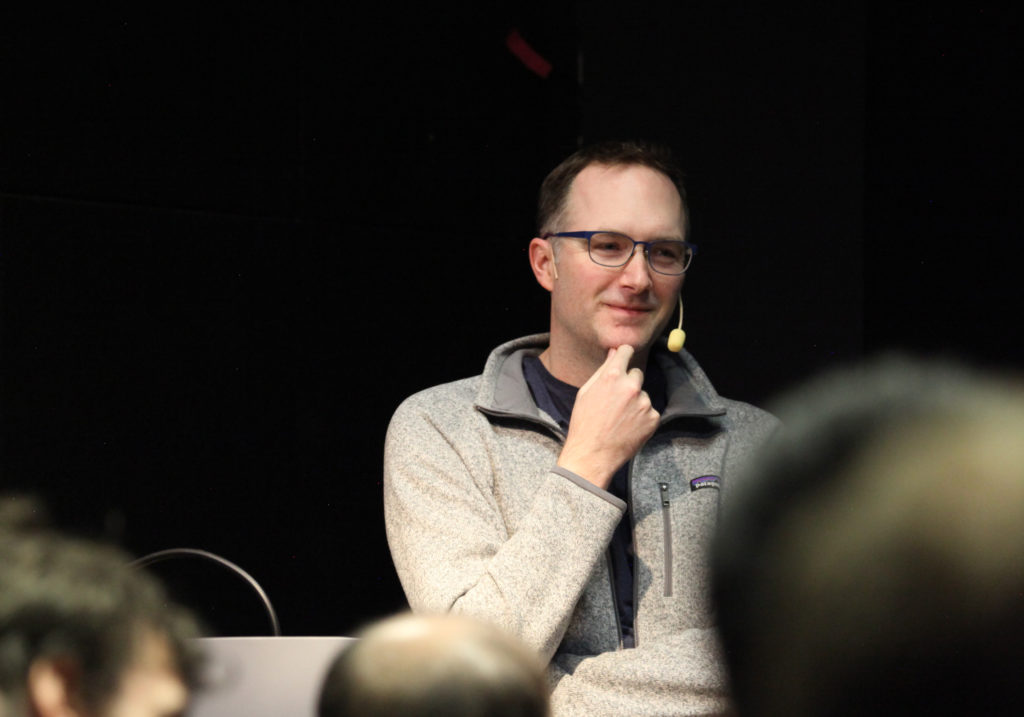
A couple of weeks ago, our supervisor, Michael Sedlmair, told us that Jeffrey Heer was going to visit the SFB-TRR 161 at VISUS. He suggested that we should organize his stay. This included student demos, pizza, and a really cool talk about balancing agency and automation in intelligent systems. Both of us were amongst the students who sat down with Jeffrey Heer, which was both exciting (in Katrin’s words) and nerve-wracking (in Cristina’s words). Here is our report on how the visit went.
New Perspectives—Katrin Angerbauer
Jeffrey Heer gave the EuroVis Keynote in 2019, and being fairly new to the field of visual computing that was how I got to know his work. Unfortunately, I only saw the slides of the keynote then, and yet they inspired me. One quote is still present in my mind (and on my whiteboard):
The ultimate subject of the visualization research community is people, not pictures.
Coming from HCI research, this reflects my research interest precisely. I want to do visual computing with people for people.
Accessibility was one of the under-researched topics Jeffrey Heer mentioned in the Keynote for EuroVis, so he was happy that my research topic concerns accessibility issues, as well as assistive technology for visual computing. Talking with him opened my eyes to aspects of the topic that I did not see before. This is always the most exciting part when I show guests and fellow researchers my work. Often a different perspective brings aspects to light that oneself might not be able to see.
This leads me back to the point I started with: Working with people is important. Not only should we get the insights from participants in our user studies, but also from our colleagues.

The Art of Focussing—Cristina Morariu
I think a common problem early doctoral students have is feeling like all the cool ideas were already discovered, researched, and implemented. This is certainly how I feel a lot of the time, with the exception that a lot of these cool ideas appeared on papers that Jeffrey Heer and his group published.
Being still in the first 6 months of my PhD, I get a bit nervous every time someone comes by my desk and asks me what I’m working on, and what my research project is all about. Chances are that most times, they will catch me deepend in a niche issue that is at first sight not related to the higher level reserach goals. Most of the time the person asking is Michael (my supervisor), or a fellow PhD from the institute. Jeffrey Heer was the first external scientist I got to talk to about my work. I started off being really worried about not being able to pitch my research in a really quick and easy to understand way. Although, I was most certainly not using the best words, he quickly got what I was talking about, identified the issues I’m concerned with, and pointed out potential work directions, as well as better ways to frame my work.
Research visits like Jeffrey Heer’s enable young PhDs like us to present our research to more experienced people, and to a wider network in the visual computing community. These types of networks, which the SFB-TRR 161 provides and promotes, connect people with the same research interests, and enables them to work together in order to achieve their goals. This improves— as we believe—not only visual computing research as such, but also the world we live in.
P.S. We are still in the first year of our PhDs, so forgive the rose-coloured glasses!
